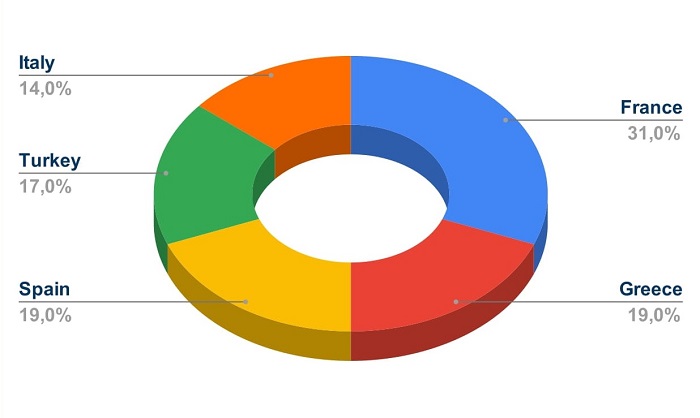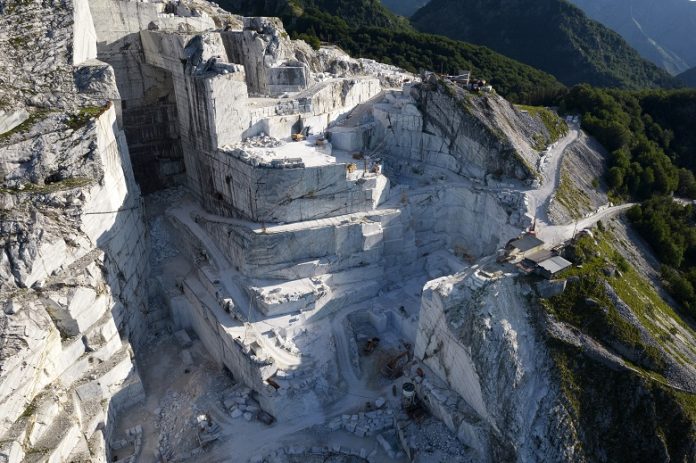Several important facts about the ornamental stone industry emerge from the Oxford University database (2013) analysis of the contribution of carved stone quarrying in the Roman period.
Throughout the ages, marble has been a necessary and sought-after raw material to make elaborate statues to decorate temples and public buildings. Thus, in Roman times marble seems to have been used extensively. According to the research, it can be concluded that in the 2nd AD century, the Romans established the Imperial ratio marmorum, marble trading office for the trade of marble, while the supply was served by the dozens of active quarries. The total number of recorded marble quarries was 792, of which more than 50% – 478 – were operating in today’s quarrying countries, namely Greece, Italy, Turkey & Spain.
 If we accept the statement of Professor Korre, who wrote in the foreword of his book “From Penteli to Parthenon” (Melissa Publications), “A good quarryman very often had in his mind some of the problems of the sculptor or the architect and made calculations that required the cultivation of thought. He had to observe and manipulate a very difficult material, he had to grasp complex combinations of geological, geometrical, artistic and engineering factors…” this contradicts the prevailing public opinion that quarry work was associated with forced labour, slavery and enslavement.
If we accept the statement of Professor Korre, who wrote in the foreword of his book “From Penteli to Parthenon” (Melissa Publications), “A good quarryman very often had in his mind some of the problems of the sculptor or the architect and made calculations that required the cultivation of thought. He had to observe and manipulate a very difficult material, he had to grasp complex combinations of geological, geometrical, artistic and engineering factors…” this contradicts the prevailing public opinion that quarry work was associated with forced labour, slavery and enslavement.
Therefore, nowadays, it seems to be a one-way street to look for ways to expand our partnerships, enrich our knowledge and reconsider our disenchanted views on the mineral wealth of Greece.






































